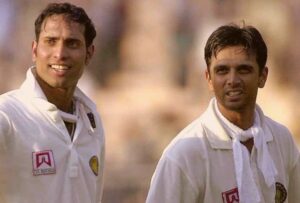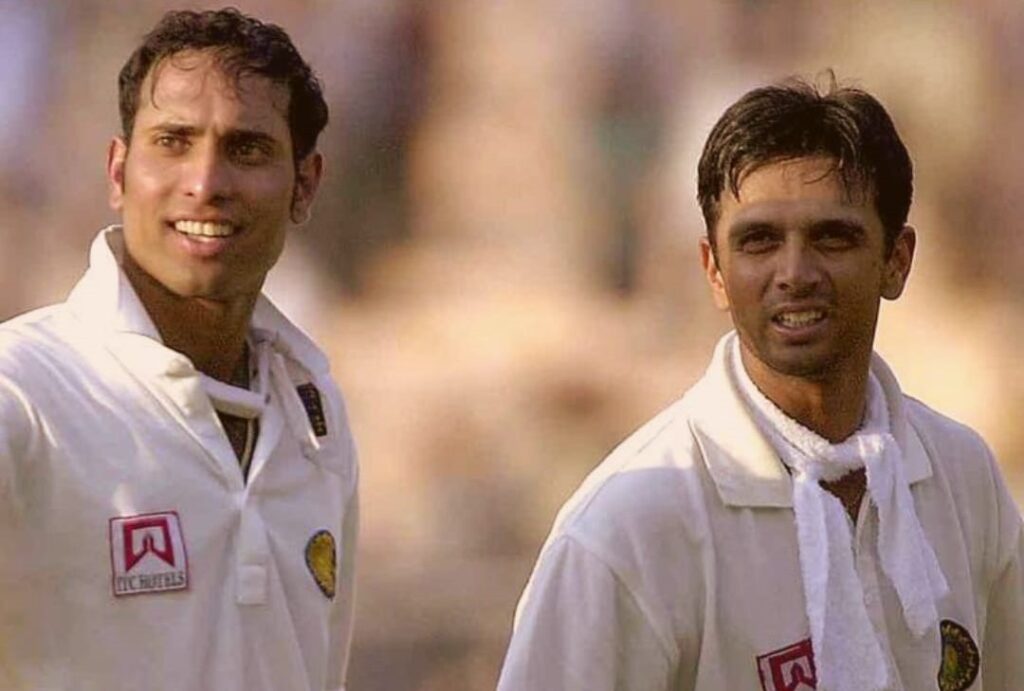
-Boria Majumdar
Cricket, in 2001, needed new oxygen to continue as India’s foremost national passion. Fans faith had to be restored and new fans needed to be brought in. That India could continue to express itself through cricket needed to be reinforced. That’s exactly what happened with the India–Australia series when cricket nationalism reached a crescendo at the back of some incredible on-field performances from the Indian team. Since then, cricket, it can be said, has never looked back as a sport, even in the face of the IPL spot-fixing scandal and subsequent judicial intervention.
The Australia team that was scheduled to tour India in 2001 had taken on and decimated the best in the world. Having won fifteen Test matches in a row, they were coming to India to conquer what captain Steve Waugh had labelled as the teams’ final frontier. His was a team that can easily go down in cricket history as the best ever and the Indians, under newly appointed skipper Sourav Ganguly, were evidently the underdogs going into the contest.
The first Test match in Mumbai was evidence of how good the Australians were. Riding on hundreds from Hayden and Gilchrist, and terrific bowling spells from McGrath, Gillespie and Warne, Waugh’s team breezed past India inside just three days. “They were really good”, says Ganguly, reminiscing the opposition’s collective display of might. “We were left wondering how and what we needed to do to take them on. Seriously speaking, I was searching for answers. They had all their bases covered and we needed something out of the ordinary to happen to be able to beat them. And Kolkata, in that sense, was a freakish Test match. If you seriously ask me how it happened and how we managed to get over the line in Kolkata after being 128/8 on day two, responding to Australia’s 445, I will have to tell you it was a miracle and it was intervention from above. Such miracles rarely happen in cricket.”
Coming into Kolkata, not even the most ardent Indian fan had given the hosts a chance. Australia, it seemed, was fast imposing itself, and it was a no-contest. Yes, Harbhajan Singh had bowled beautifully in Mumbai, but, for a youngster, it was hard to believe how time and again he could strangle an Australian batting line-up considered the best side of all time.
Even at the Eden Gardens, all was going to plan for the Australians. At 252/4 on day one, Australia was poised to post a big total, much before Harbhajan accomplished the first miracle of the series: a hat-trick. The first Indian to do so, it was as if the massive Kolkata crowd had suddenly awakened from their slumber. A quiet stadium had started to make noise, those were pre Covid days, and all of a sudden it was a contest. India had staged a fightback and, if they could polish off the tail quickly, things could still happen for Sourav’s men. Unfortunately, for India, though, the tail wagged and Waugh farmed the strike quite adroitly to take Australia to 445, scoring a brilliant century in the process. For India, pitted against a buoyant Australian bowling attack it was a tall ask. And when the top order collapsed for the third time in a row, it seemed Australia would easily get to their seventeenth consecutive Test win—the first such feat by any team in world cricket.
India displayed some pluck on the third morning, thanks to Laxman, who scored a gritty 59 and was the last man to get out. Australia, leading by 274 runs, enforced the follow-on. ‘We had the measure of the Indians so far in the series and the bowlers were confident of doing it one more time. I had no hesitation in asking the Indians to bat again.’ said Steve Waugh recounting the horror that was to follow.
In an inspired move, India decided to push Laxman to number three—a decision that transformed Indian cricket forever. ‘It was decided that the way V.V.S. batted (in the first innings) we were better off sending him at three. Rahul could bat at six, and it was something that could unsettle the Australians.’ Ganguly narrates with a smile. ‘But no one could anticipate what followed. Even when I got out and we ended day three at 254/4, it was Australia’s game. I have to say what followed was the best ever partnership in the history of Indian cricket. We did not lose a wicket through the fourth day and scored 335 runs in the process. Rahul and Laxman were both on drips in the dressing room; by the end of it all, they had lost so much fluid. However, despite the exhaustion and the cramps, they kept backing themselves. Australia literally could not believe what was going on,’ recounts Ganguly.
Laxman’s 452-ball 281—his Sydney 167 in 2000 notwithstanding—marked the maturing of the cricketer. ‘I was batting well throughout the Test match and when asked to bat at three in the second innings I must say I felt good about it. Here was an opportunity to make the most of the good form. As the partnership with Rahul progressed and we had scored a 100 together, we started to believe we could just carry on and on. We knew we had to play out the new ball and some key spells and that would put the pressure back on the Australians. The plan worked and though it was tiring, we kept pushing each other on because something really special was about to happen,’ mentioned Laxman sitting outside the very same dressing room at the Eden Gardens and reminiscing the innings.
During the course of the innings, Warne was treated with disdain, and each time Laxman danced down the pitch to play against the turn through the off side, the crowd erupted for him. The gladiator had his audience; a mass of humanity, who had started to believe in the miracle, were on their toes. Australian shoulders had dropped by the end of day four, and it was clear that India would no longer lose the Test match. Winning the game would assume significance for the home side at so many levels. One, not only would it mean a victory against the mighty Australians, but also correspond to ending the opponent’s undefeated streak. Did anyone, however, really believe that the three-match series would go into the decider in Chennai, tied at 1–1? Perhaps not. Riding on Laxman’s 281 and Dravid’s ’s 180, which was an answer to all his critics who had doubted his ability, Ganguly declared in the morning session of day five, setting Australia a target that most teams wouldn’t want to go for on a turning surface. This Australian team, however, was different. They were the best in the world and would never shy away from a challenge. Harbhajan was bowling the best he has ever bowled in his career and it was a contest every cricket fan, who was there at the Eden Gardens, would forever cherish.
The press box—it was my first time at the Eden Gardens media centre—was full of emotion. Australian journalists could not believe what they had witnessed and still felt Waugh and his team could hold on. The Indian journalists, on the other hand, had finally found their voice. Quiet and sneered at for two days, they started to cheer every Australian wicket that fell.
When the Indians dropped Waugh just on the stroke of tea, it seemed a draw was the most likely result. The Australian captain went back unbeaten and, with seven wickets still remaining to be taken, even for Harbhajan, who was bowling like a man possessed, it seemed a task too steep to accomplish. ‘The gods thought differently,’ says Ganguly, sporting a smile on his face. ‘Moments after tea, Steve Waugh gave us another chance and this time, we did not mess up. With Steve out, we had started to believe it could be done. And when things weren’t happening for a while, I decided to go to Sachin just to try him out for an over or two. The plan was to keep things tight from one end and bowl Harbhajan right through from the other because he was my key weapon to pick wickets. Sachin, who always had the ability with the ball, bowled a magical five-over spell and picked three wickets, making it game, set and match for us. The googly with which he got Shane Warne out could have got any batsman in the world.’
Tendulkar, who had not done much with the bat during the two innings, falling for just ten in either innings, was itching to contribute with the ball. ‘I knew I had one or two overs to make an impact and thought to myself that it was best to mix it up against Hayden and Gilchrist because conventional wisdom suggested I would only bowl off spin against the left-hand batsmen. And once I managed to get Hayden and Gilchrist out and Warne walked in, I made up my mind to try and bowl a googly to him. He wouldn’t be expecting it and it was my chance to pick up a third wicket. The ball wasn’t as full as I would have wanted but Warne was done in by the turn. And when it hit him back in his crease, I knew I had him plumb,’ recounts Tendulkar.
Finally, when Harbhajan trapped McGrath lbw, a decision that will forever be contested in the annals of world cricket, 100,000 people at the Eden Gardens collectively erupted. The noise was deafening; the passion seductive. Match-fixing was a thing of the past. Cricket in India had been given a new lease of life, and Ganguly’s team had accomplished a feat none had in world cricket. That the Australians could be beaten was finally a proven reality and, as Ganguly says, the Indians went to Chennai for the decider believing that the momentum had turned in their favour.
The Test match had captured peoples’ imagination at all levels, evident from an incident that took place in the evening four hours after the match had ended. Umpire S.K. Bansal, who was officiating when the last wicket fell, was returning to his hotel when his driver took a wrong turn into a one way street. Within minutes he was stopped by a traffic constable on duty and asked to hand over his license for breaking traffic rules. The driver, uncertain and afraid, looked to umpire Bansal for support. Bansal, the story goes, stepped out of the car to request the cop to let the driver go and apologised on his behalf. Seeing him, the cop for a moment was left wondering who he was and then asked if he was indeed THE S.K. Bansal who had given Glenn McGrath out! Upon knowing that he indeed was, the cop asked the driver to carry on saying for Umpire Bansal all rules could be changed that evening!
Cricket, it would not be an exaggeration to suggest, was overnight back as front page news. Harbhajan, Laxman and Dravid were being celebrated as national saviours and the spectre of match-fixing, still fresh in public minds, had taken a backseat. You just can’t fix a match like the one played out at Eden Gardens and bat and bowl like the way the Indians did. It was cricket of a very different level and a Test match like this one could never be scripted. Laxman dancing down the track to Warne and hitting him past mid-off and mid-on or Harbhajan bowling like a dream and finally Dravid batting as if peoples’ lives were dependent on him—were exactly the kind of performances cricket needed to regain credibility. Thanks to the Eden miracle, it happened.




